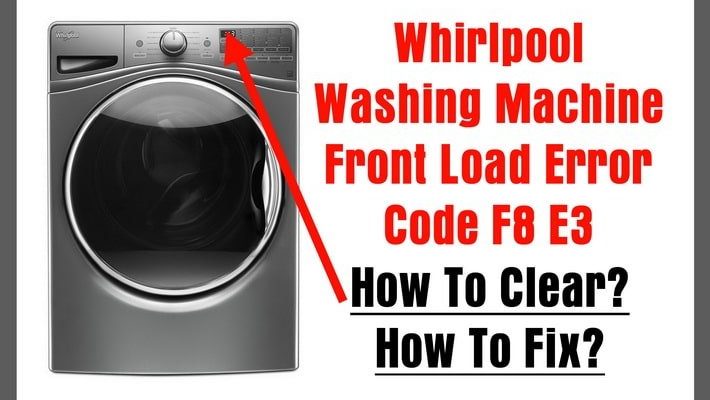
Error ‘OE’ in your Whirlpool washing machine is like a gentle nudge from your appliance, signaling that it’s having trouble draining the water. This can be due to several reasons, like a clogged drain hose or filter, or even a faulty pump. While it might seem like a minor hiccup, neglecting this issue could lead to bigger problems down the line. Let’s break down why this error occurs, what happens if you leave it unresolved, and most importantly, how you can fix it.
Understanding Error ‘OE’
So, what exactly is this ‘OE’ error? Think of it as your washing machine’s way of telling you it’s struggling to empty the dirty water. Just like when your bathroom sink backs up because of a clog, the washing machine can’t drain properly if there’s something blocking its path. This could be an obstruction in the drain hose, a malfunction in the pump, or even a kinked hose that’s pinching the flow.
In more relatable terms, if your washing machine is like a giant bathtub, ‘OE’ is the equivalent of trying to drain the tub with the plug still partially in place. Water can’t escape, and it’s just building up inside. This is not just a mere inconvenience but a potential source of trouble if not addressed promptly.
Here’s the deal: Ignoring this error can cause the machine to stop mid-cycle, leaving your clothes soaking wet. It could lead to more severe mechanical problems if the pump is forced to work overtime, potentially burning it out. This small error code is a way of preventing bigger, more costly repairs down the line.
Potential Consequences of Ignoring the Error
Ignoring the ‘OE’ error is a bit like ignoring a leaky faucet—it may not seem like a big deal at first, but over time, the consequences can add up. One immediate effect you’ll notice is that your laundry routine will come to a halt. The washer might refuse to start a new cycle or finish a current one, leaving you with a basket full of wet clothes and no easy way to dry them.
Furthermore, if the error indicates a blocked pump, the machine could become unbalanced during spins, causing excessive wear and tear. It’s a bit like driving a car with a flat tire—not only is it less efficient, but it also puts unnecessary stress on other parts of the machine. Over time, this can cause more components to fail, leading to an overall breakdown of your washing machine.
What’s more, water left standing in the machine can become a breeding ground for mold and bacteria. If you don’t address the error promptly and let water linger, you might open the lid one day to a nasty odor that permeates your laundry. To avoid these smelly surprises, it’s crucial to address the ‘OE’ error as soon as it appears.
How to Tackle the ‘OE’ Error
Okay, let’s demystify the process of fixing this error. First things first, turn off and unplug your washing machine—safety first! Then, check if there’s a simple clog in the drain hose. This could be caused by stray socks or lint that didn’t get caught in the filter. Think of it like clearing a blocked shower drain; sometimes, the solution is as simple as removing the obstruction manually.
If the hose is clear, examine the pump filter. This is usually accessible from the front of the machine. Unscrew the filter cover and check for debris. If it’s blocked, rinse it under running water until it’s clean and free-flowing. It’s a straightforward fix that could save you from a lot of hassle.
In the event these steps don’t resolve the error, there might be a more complex issue with the machine’s pump that requires professional help. Although it’s tempting to fix everything yourself, sometimes calling in an expert is the best course of action. Regular maintenance checks are also a good preventative measure to keep your machine running smoothly.
Preventing Future Errors
If you’ve ever dealt with an overflowing sink or toilet, you know prevention is better than cure. The same goes for your washing machine. To prevent the ‘OE’ error from showing up in the future, regularly inspect and clean the drain hose and filter. This small act of maintenance can go a long way in ensuring smooth operation.
Regularly inspect the condition of the drain hose for any signs of wear and tear, such as leaks or kinks. Imagine it like checking your garden hose before watering your plants; any leaks or bends can affect performance.
Lastly, try not to overload your washing machine. Too many clothes can prevent water from draining properly, putting undue stress on the machine. Think of it like trying to pack an overstuffed suitcase; sometimes, less is more.
By taking these simple preventative steps, you can keep your Whirlpool washing machine happy and functional, treating you to years of loyal service without any annoying interruptions.
